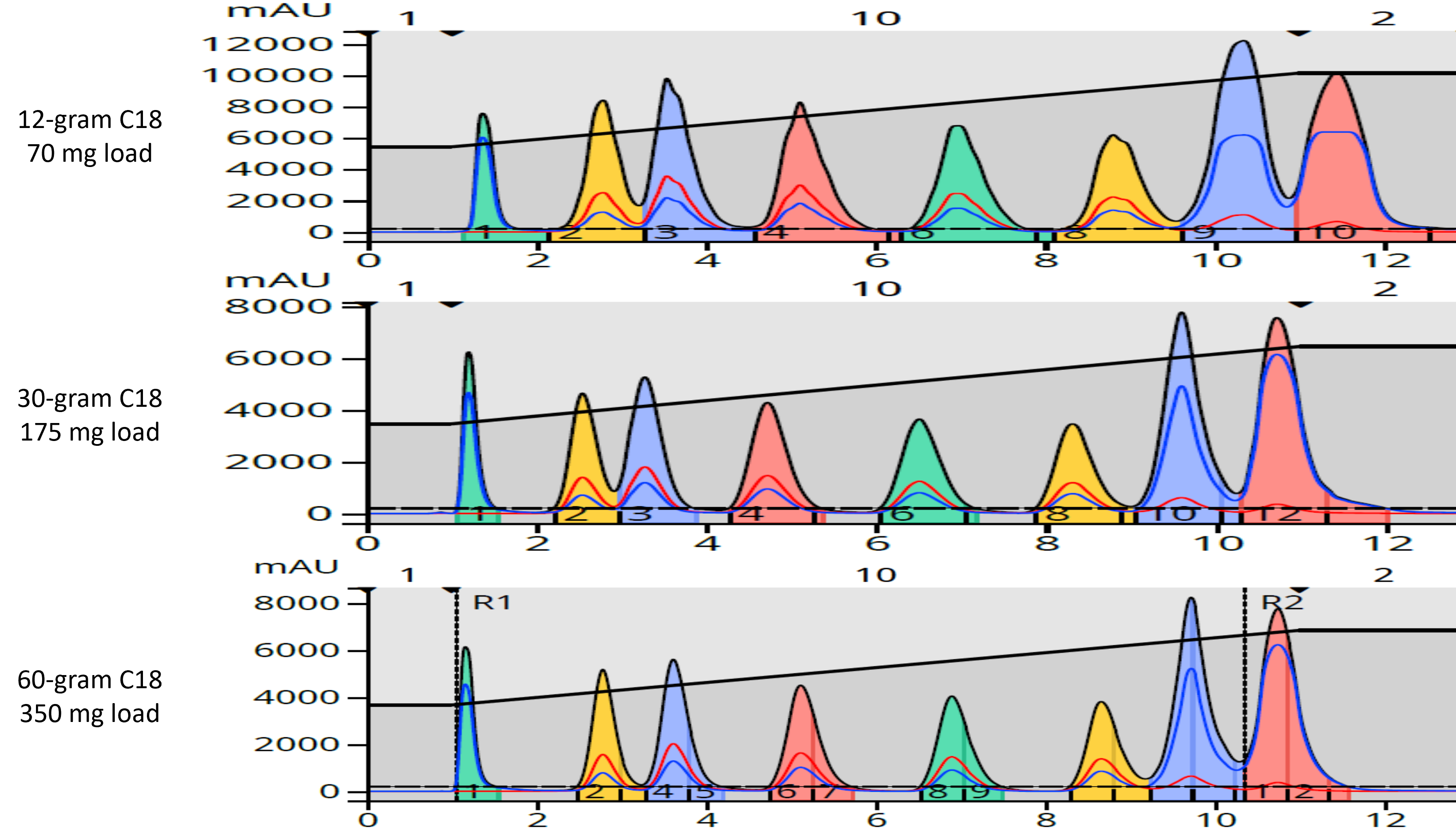Apr 28, 2023 10:07:20 AM
What's the best way to scale-up flash chromatography?
By Bob Bickler

Flash chromatography is an integral part of the organic synthesis workflow. For most chemists, they make a compound once and then move on to the next synthesis. Sometimes, the synthesis needs to be scaled up and in those instances, its reaction mixture purification also needs scaling, especially if crystallization is not an efficient option.
So, in this situation, how do you scale up the purification? I have posted on this topic previously but will elaborate further here. Would you believe that purification scale-up is actually easier than synthetic scale-up? Well, it is.
Synthetic scale-up is influenced by factors including vessel dimensions, heat transfer, reagent concentration, solvent chemistry, all which can be a challenge scale to make product at the same yield and purity.
Chromatography, on the other hand, is a directly scalable process based on loading percentage. If a 1% load is achieved with a small column, e.g., 10-gram, then a 1% load is also possible with all larger columns as long as the method and sample concentration remain the same.
The simplest way to ensure a directly scalable purification is to build the method using column volumes on a flash system with a column database of flash columns and their column volumes, i.e., the Biotage® Selekt system. Creating a flash method based on column volumes rather than time or volume removes the need to calculate a purification run’s length or volume based on column size and flow rate. A method based on column volumes automatically incorporates those variables since the flash system knows each column’s volume.
With that information, the flash system will automatically assign a default flow rate and replicate the smaller column’s method using the same gradient profile using the same number of column volumes. The default flow rates can be changed if desired to ensure the methods’ solvent linear velocity remains the same. While equalizing linear velocity is not required to achieve good results, it can help to equalize the chromatography mass-transfer kinetics which can influence the separation quality.
To show how directly scalable flash chromatography is, I purified a 7-compound mixture on a 12-gram Biotage Sfär C18 column using a 45-80% methanol/water gradient at 30 mL/min. At 30 mL/min the linear velocity was 0.16 mm/sec. This purification was then scaled 2.5x using a 30-gram Sfär C18 column at 55 mL/min (0.15 mm/sec) and 5x with a 60-gram Sfär C18 column at 105 mL/min (0.16 mm/sec).
Sample loads were directly proportional as well with 70 mg loaded on the 12-gram column (0.58%). Based on this load ratio or the scaling factor (ratio of column masses), the equivalent load on the 30-gram column was 175 mg and 350 mg on the 60-gram column.
The results below show virtually identical chromatography as the purification is scaled up.

Direct, linear chromatography scale up does not end with a 60-gram column. As long as the gradient method, based on column volumes, and load ratio are maintained, identical purification results can be achieved regardless of column size.
For more information on scaling up flash chromatography, including reversed-phase, download our whitepaper How to Determine Reversed-phase Flash Chromatography Loading Capacity.
Published: Apr 28, 2023 10:07:20 AM

